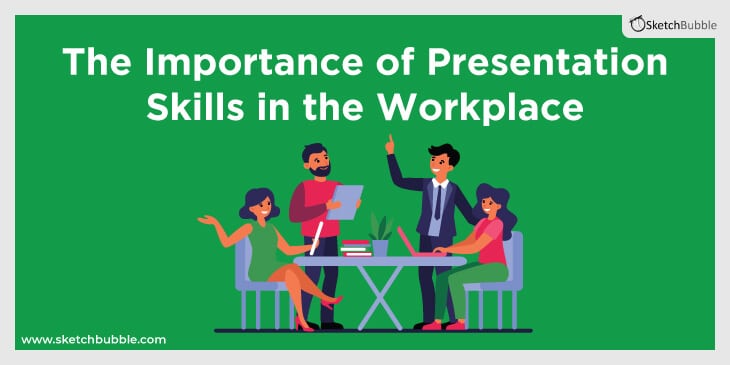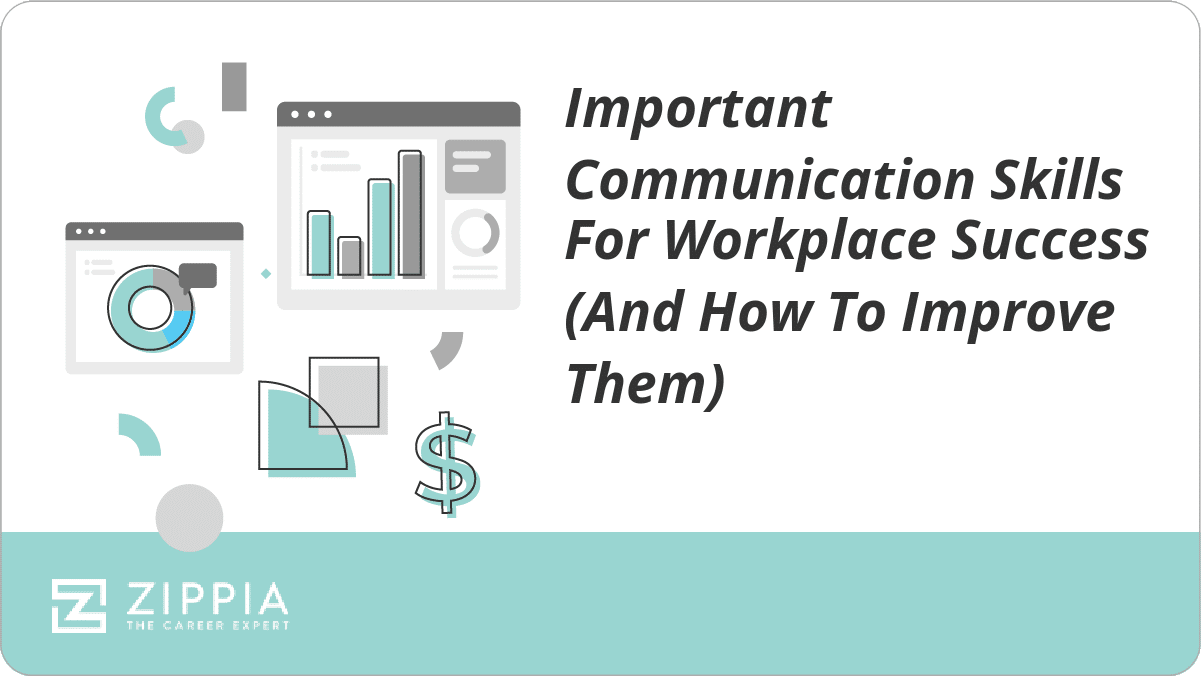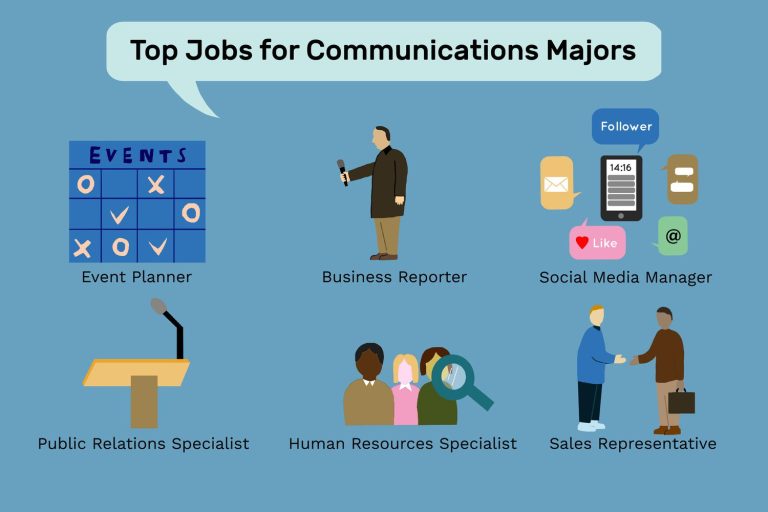Important Presentation Skills for Workplace Success
Presentation skills are important for workplace success as they help convey information effectively and engage the audience. A well-delivered presentation can leave a lasting impression, boost professional reputation, and enhance career opportunities.
Good presentation skills involve clear articulation, confident body language, appropriate use of visuals, and effective storytelling techniques. By honing these skills, individuals can improve their overall communication abilities, build rapport with colleagues and clients, and become more influential in their workplace.
Whether it’s a team meeting, client pitch, or conference presentation, mastering presentation skills can greatly contribute to career advancement and success.
:max_bytes(150000):strip_icc()/112156302-56b097c33df78cf772cfe6c5.jpg)
Credit: www.thebalancemoney.com
Confidence
Confidence is a crucial presentation skill that can greatly contribute to your workplace success. It is the key to effectively delivering your message and engaging your audience. When you have confidence, you exude a sense of authority and credibility, capturing the attention of your listeners and leaving a lasting impact. Developing confidence in your presentation skills requires practice, preparation, and a deep understanding of the essential elements that contribute to a confident presentation.
Body Language
Body language plays a significant role in conveying confidence during a presentation. The way you hold yourself and move can directly influence how your audience perceives you. Here are some important body language tips to help you appear more confident:
- Maintain an upright posture. Stand tall and avoid slouching to project confidence and professionalism.
- Keep your gestures natural. Use your hands purposefully to emphasize key points, but avoid excessive or erratic movements.
- Establish eye contact. Look directly at your audience members, engaging with them on a personal level.
- Use open and relaxed gestures. Avoid crossing your arms or closing off your body language, as this can signal defensiveness or lack of confidence.
Voice Projection
Voice projection is another vital aspect of confident presentation skills. A strong, clear voice can enhance your credibility and ensure that your message reaches every corner of the room. To improve your voice projection:
- Breathe deeply and maintain a relaxed posture to support proper airflow and vocal power.
- Speak slowly and enunciate your words clearly to ensure that your audience can understand you.
- Vary your vocal tone and pitch to add interest and maintain engagement.
- Avoid using filler words, such as “um” or “like,” as they can undermine the confidence in your delivery.
- Practice your presentation in a well-ventilated area to simulate larger spaces and increase your vocal projection.

Credit: www.sketchbubble.com
Effective Communication
Effective communication plays a crucial role in workplace success, especially when it comes to important presentation skills. By honing these skills, professionals can effectively convey their ideas, engage their audience, and achieve their desired outcomes.
Active Listening
Clear And Concise Messaging
Effective communication is a critical skill for workplace success. It’s about conveying your thoughts and ideas clearly and listening actively to others. By honing your communication skills, you can improve your professional relationships and achieve greater success in your career.
Active Listening
Active listening is an essential component of effective communication. It involves fully focusing on and understanding the speaker’s message, rather than just passively hearing what they say. By actively listening, you demonstrate respect and empathy towards the speaker, which fosters trust and open communication.
Here are some tips to enhance your active listening skills:
- Maintain eye contact: When someone is speaking, maintain eye contact to show that you are fully engaged and interested in what they are saying.
- Minimize distractions: Avoid distractions, such as checking your phone or multitasking, as they can hinder your ability to listen attentively.
- Ask clarifying questions: If you don’t understand something, don’t hesitate to ask the speaker for clarification. This demonstrates your genuine interest in understanding their message.
- Provide feedback: Show the speaker that you are actively listening by providing verbal or non-verbal feedback, such as nodding or summarizing their main points.
Clear And Concise Messaging
Clear and concise messaging is crucial in effectively conveying your ideas to others. Whether it’s presenting information or participating in discussions, using clear and concise language helps ensure that your intended message is understood correctly.
Consider the following strategies for achieving clear and concise messaging:
- Organize your thoughts: Before communicating your ideas, take time to organize your thoughts so that you can express them in a logical and coherent manner.
- Avoid jargon and technical terms: When speaking with colleagues or clients outside of your field, use language that they can easily understand. Avoid using jargon and technical terms that may confuse or alienate them.
- Use visual aids: When delivering presentations or sharing information, visual aids such as charts, graphs, and diagrams can help convey complex ideas in a clear and concise manner.
- Keep it simple: Use simple and straightforward language to communicate your ideas. Avoid unnecessary complexity or verbosity that may confuse your audience.
Engaging Content
When it comes to delivering a successful presentation in the workplace, engaging content is key. By captivating your audience’s attention and keeping them interested throughout your presentation, you increase the likelihood of conveying your message effectively. This section will explore two crucial aspects of engaging content: storytelling and visual aids.
Storytelling
Storytelling is a powerful tool for engaging your audience during a presentation. Humans are wired to connect with stories on an emotional level, making them an effective way to convey information and leave a lasting impression. Here are a few key tips for incorporating storytelling in your presentations:
- Make it relatable: Share personal anecdotes or real-world examples that your audience can relate to. This helps them connect with the content on a personal level.
- Create suspense: Use storytelling techniques such as building anticipation, creating tension, and revealing surprises to keep your audience engaged and eager to know what happens next.
- Use visuals: Support your storytelling with relevant visuals, such as images or videos, to enhance the impact and aid in the audience’s understanding.
- Keep it concise: Craft your stories in a concise and to-the-point manner to maintain the audience’s attention. Focus on the key message you want to convey.
Visual Aids
Visual aids play a significant role in enhancing engagement and comprehension during a presentation. Here are some effective ways to utilize them effectively:
- Use images: High-quality images grab attention and help illustrate complex concepts. Choose visuals that are relevant, visually appealing, and clearly support your key points.
- Create infographics: Infographics are a concise and visually appealing way to present data or statistics. Use tools or software to design attractive infographics that simplify complex information.
- Include graphs and charts: Graphs and charts are excellent visual aids to present quantitative information. Use clear labels and colors to make the data easily understandable at a glance.
- Utilize video/audio clips: Incorporating video or audio clips can add variety to your presentation and stimulate the audience’s interest. Use them strategically to reinforce key points or provide real-life examples.
By weaving captivating stories into your presentations and incorporating visually appealing aids, you can create an engaging and memorable experience for your audience. Remember, engaging content helps you effectively convey your message and leaves a lasting impact on your listeners.
Adapting To The Audience
Adapting to the audience is a crucial skill for successful workplace presentations. Understanding who your audience is and tailoring your message accordingly can make a significant impact on the effectiveness of your presentation. When you adapt your presentation to suit the needs and preferences of your audience, you enhance communication and increase the chances of achieving your desired outcomes.
Understanding The Audience
To effectively adapt to your audience, you first need to understand who they are. Take the time to research and gather information about your audience before the presentation. This information may include their demographics, knowledge level, interests, and values. Knowing your audience will help you determine their background and expertise, allowing you to pitch your presentation at the right level.
Once you have a clear understanding of your audience, it’s time to tailor your message. Structure your presentation in a way that resonates with your audience and aligns with their needs and expectations. Use language and examples that are relevant and relatable to them. Consider their level of familiarity with the topic and adjust your content and delivery style accordingly.
Incorporating interactive elements in your presentation can help engage the audience and maintain their interest. Encourage participation through polls, questions, or group activities. This not only makes your presentation more dynamic and captivating but also ensures that the audience remains active and involved throughout.
During the presentation, be open to adapting on the spot based on the audience’s response and feedback. Pay attention to their non-verbal cues, such as facial expressions and body language, and adjust your pacing, tone, or content if needed. This flexibility demonstrates your ability to connect with the audience and ensures that your message is effectively received.
In a diverse workplace, it’s important to consider cultural differences when adapting your presentation. Be aware of cultural norms and values that may influence the way your message is perceived. Respect diversity and avoid language or content that may be offensive or inappropriate. By being sensitive to cultural differences, you create an inclusive and respectful environment that enhances communication and understanding.
In summary, adapting to the audience is a vital skill for workplace presentations. By understanding your audience and tailoring your message to their needs and preferences, you can create a compelling presentation that holds their attention and achieves your desired outcomes. Incorporating interactive elements, being flexible, and considering cultural differences further enhance your ability to adapt and connect with your audience effectively.
Handling Nervousness
Learn effective strategies to handle nervousness during important presentations to enhance your workplace success. Discover techniques to overcome anxiety and deliver confident and impactful presentations that leave a lasting impression on your audience.
Preparation And Practice
Preparing a presentation in advance and practicing it can help reduce nervousness significantly. To prepare effectively, start by understanding the audience and the purpose of the presentation.
Research the topic thoroughly and organize the content in a logical manner using a clear structure. Creating an outline with key points will help you stay focused during the presentation.
Next, practice delivering the presentation multiple times. This will help you become more comfortable with the content and improve your overall confidence. Pay attention to your body language, voice modulation, and facial expressions while practicing.
Breathing And Relaxation Techniques
When it’s time to present, you can use breathing and relaxation techniques to calm your nerves. Take a moment before you start to focus on deep breathing. Inhale deeply through your nose, hold the breath for a few seconds, and then exhale slowly through your mouth.
Visualize success and positive outcomes before stepping on stage. Close your eyes and imagine yourself delivering the presentation flawlessly, receiving applause and positive feedback. This visualization exercise can help alleviate nervousness and boost your confidence.
Additionally, consider incorporating physical relaxation techniques. Stretch your muscles, roll your shoulders, or practice gentle neck movements to release tension in your body. These simple exercises can help you to relax and feel more at ease.

Credit: www.zippia.com
Frequently Asked Questions Of Important Presentation Skills For Workplace Success
What Are 5 Key Points To Deliver An Effective Workplace Presentation?
To deliver an effective workplace presentation, follow these key points: 1. Plan and structure your presentation beforehand. 2. Use visuals and props to engage your audience. 3. Speak clearly and confidently, maintaining eye contact. 4. Keep your content concise and focused on the main message.
5. Practice and rehearse to ensure smooth delivery.
What Are The 5 P’s Of Presentation Skills?
The 5 P’s of presentation skills are: Preparation, Practice, Presence, Pitch, and Power.
What Are The 7 P’s Of Effective Presentation?
The 7 P’s of effective presentation are Preparation, Purpose, Perspective, PowerPoint, Practice, Passion, and Performance. These elements contribute to creating a successful and impactful presentation.
Conclusion
Developing strong presentation skills is essential for achieving workplace success. By practicing effective communication, engaging with the audience, and delivering clear and concise messages, professionals can enhance their chances of making a lasting impression. Incorporating these skills into daily work routines will not only boost confidence but also improve leadership abilities.
In an increasingly competitive business landscape, the ability to deliver impactful presentations can set individuals apart and open up new opportunities for growth and advancement. Start honing your presentation skills today and watch as your career soars to new heights.


